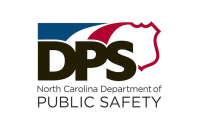Lead the way: Haywood artist releases frame-worthy trail guides
 Ken Czarnomski has always loved sketching and writing, but as a department chair for the sustainability and construction management programs at Asheville-Buncombe Technical Community College, his projects consisted mainly of razor-straight lines and technical engineering language. There wasn’t a lot of room for freehand sketches or colorful commentary.
Ken Czarnomski has always loved sketching and writing, but as a department chair for the sustainability and construction management programs at Asheville-Buncombe Technical Community College, his projects consisted mainly of razor-straight lines and technical engineering language. There wasn’t a lot of room for freehand sketches or colorful commentary.
After retiring, Czarnomski began looking around for ways to pick up some of those hobbies he’d left untouched as a working professional. At the same time, he wanted to find a way to give back to his community, Haywood County. So, he started sketching hiking maps.
Well, not right away. First he enrolled in the Blue Ridge Naturalist Certificate Program, offered through the University of North Carolina and taught at the North Carolina Arboretum in Asheville. The program, which aims to increase participants’ understanding of Western North Carolina’s cultural and natural heritage, includes 240 hours of instruction and a project at the end. For his project, Czarnomski made a hiking map of the Purchase Knob area of Great Smoky Mountains National Park.
“What I wanted to do was concentrate on areas that were accessible to people all seasons,” Czarnomski said. “Whether it was spring, summer, fall, winter, they could head out and find a place and still make a nice day’s walk and still enjoy the day, maybe bring the family and learn something along the way.”
The hiker’s conundrum
The Purchase Knob map came out in 2013, and now Czarnomski has released a second, a full-color one-pager of the Sam Knob area of the Shining Rock Wilderness. The maps are scaled, labeled and surrounded by illustrations of the plants, wildlife and features such as rocks and waterfalls that make the areas what they are.
Related Items
And to sweeten the deal, they’re free, available through the Haywood County Tourism Development Authority and its visitor’s centers.
“A lot of the visitors want to take them home and frame them because they’re so beautiful,” said Jena Sowers, who works at the Waynesville visitor center.
The guides give visitor center staff an easy way to point visitors toward a trail they’ll enjoy, with the information in hand to know where they’re going and what they’re seeing. The bulk of people coming through the center in a day — that number can range anywhere from 70 to 500, depending on the season and what’s going on around town — are there to ask for hiking directions.
“I would say as high as 80, 85 percent,” said Lynn Collins, executive director of the TDA.
Considering that there’s about 2,000 miles of trails within a two-hour drive of Waynesville, locals might find it odd that visitors have such a hard time knowing where to go. But for visitors who don’t have a full collection of maps, aren’t sure how long a 5-mile loop takes or aren’t comfortable with local directions along the lines of “turn right on the gravel road after the bridge and drive till it ends,” having a full-service guide that fits on one sheet is a great thing.
“This has been a great partnership for us to work with Ken to do these maps,” Collins said.
To Czarnomski, though, they’re more than just maps. They’re guides, invitations to come to the mountains and fall in love.
“Everybody walks for a different reason,” Czarnomski said. “If I can get people out there, they become real supporters for our national parks and wilderness areas and things like that.”
In fact, that’s exactly why he chose the Sam Knob area of the Shining Rock Wilderness for his most recent map — to celebrate wilderness.
“Shining Rock is a natural because it’s one of the three or so wilderness areas in the whole east coast, and this year being the 50th anniversary of the Wilderness Act, Shining Rock was one of the first wilderness areas in the whole U.S.,” Czarnomski said.
Hikers familiar with the Black Balsam area might find it odd, though, that Czarnomski didn’t include the well-known Black Balsam Road on his map, instead routing hikers to access the trail from the Mountains-to-Sea Trail where it intersects with N.C. 215.
The reason? The Parkway is often closed in the winter, especially that section — the nearby Devil’s Courthouse tunnel ices up pretty easily — but hikers can access the area through the Mountains-to-Sea Trail during any season. The MST crosses N.C. 215 just below the road’s junction with the Parkway.
Reaching it that way, hikers can do a full-day 9.75-mile loop or get their fill with more immediate landmarks. The back of the map lists the distances between each junction, rating their difficulty and noting any conditions hikers should be aware of.
The making of a map
The route to a complete product was not quite as cut-and-dry as the route hikers can now pull out on the 16-by-12 sheet of paper.
For both the Shining Rock and Purchase Knob maps, Czarnomski used a combination of data from GPS devices, satellite images, a compass, cell phone and U.S. Geological Survey topographic maps to get the distances right.
Identifying himself as an “old nerd” who took a long time to believe that more automatic devices could beat his slide rule and compass, Czarnomski still uses a combination of data sources because, “Data develops in different methods and we still need the resources to get a level of accuracy.”
After compiling the data, he had to change the scale to something that made more sense for a hiking guide. The entire hiking loop is but one small corner of the Shining Rock Wilderness, so the area had to be expanded, and to scale.
Telling the story
A quick look at the map might belie the complexity of that process. The free-sweeping strokes of the sketches — a combination of watercolor, colored pencils and marker — and the authoritative discussion of mountain geology and the great fire of 1925 that cleared the bald of trees give the impression of a naturally occurring product rather than of a painstakingly developed representation of remote wilderness.
The backside of the map details Carroll Craig’s memories of the area — he’s a tracker and hunter who knows the area intimately, and he’s also Czarnomski’s neighbor — and depicts the tracks of native wildlife. It lists the must-see features of the trails and tells of the logging history of the area. It lists travel and hiking directions and tells readers where to find a web cam that shows road conditions through the national forest.
“[From the time] when I sit down to start the process to when I finish it could take five months easily because you throw out ideas, you boil things down,” Czarnomski said. “You say, ‘I wrote too much about that.’ You let it sit for a while. You come back and throw a few more things in it until you finally get to something that’s worthwhile.”
There is a natural element to the map’s development, as well. A lifelong hiker and artist, Czarnomski’s been at it for a long time. And since starting to keep trail journals of his hikes four years ago, he’s got books full of notes and sketches jotted down while in the backcountry.
“What shaped the area?” Czarnomski said of one question his maps attempt to elucidate. “In this particular case it was not only the geology but the historic fires out there, the damage that was done by that. Each time I do something, I try to do something a little bit different but convey all this information so you have it one simple page.”
In all likelihood, there will be more “simple” pages to come from Ken Czarnomski. Developing the guides is a chance to get outdoors, a chance to create and a chance to loop full circle back to the things that gave him joy as a child.
“I feel pretty lucky I can get back into this area, actually sketching the field again, because it’s a skill I had when I was younger but I sort of set it aside and got away from it for a number of years,” he said. “It’s nice to come back and say, ‘I still have some of those skills and can do this in a way that is interesting to other people and is fun to do.’”









